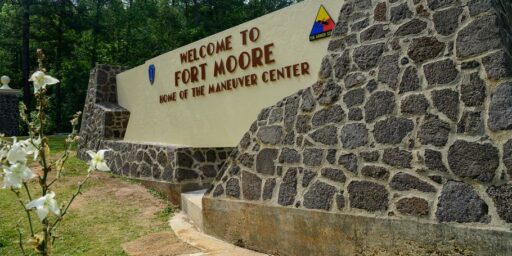Fort Campbell Getting $230 Million Makeover
Fort Campbell, Kentucky, home to the Army’s 101st Airborne Division, is getting a long-overdue makeover.
Fort Campbell Undergoes $230M Makeover (AP)
Soldiers stationed at Fort Campbell have become accustomed to living in the past, stuck in a mix of dreary post housing that reflects years of add-ons and a hodgepodge of styles dating back to World War II. But that is beginning to change for the soldiers of the 101st Airborne Division, with more then $230 million in projects that include an overhaul of the barracks where single soldiers live and construction of a new headquarters for command units. “It’s kind of like extreme barracks makeover,” said Jim Duttweiler, head of public works for this sprawling post along the Kentucky-Tennessee line. “We’re basically gutting the buildings.”
Most of the soldiers who call Fort Campbell home will not be there to see the work — the division is deploying to Iraq and will return to a post cluttered with construction.
Razing the boxy, white World War II-era buildings to make way for relatively posh quarters is part of an ongoing effort to modernize the Army. Planners hope to have all the Fort Campbell barracks completed by 2008, with the bulk of work done before the division’s 20,000 soldiers begin returning in June.
[….]
The post began as a mobilization camp for World War II, with buildings made to last no more than three years. Much of the installation already was aging shortly after it was built. “There have been millions of dollars poured into this place to take that temporary, wooden camp and turn it into a modern city that could support the modern army,” said John O’Brien, a retired lieutenant colonel who serves as Fort Campbell’s historian. “It’s taken 65 years to happen.”
Over half a century has left many of the three-story barracks buildings a collage of cracks and chipped paint. Antiquated heating makes tiled floors cold in the winter and old water pipes corroded with sediment have weakened water pressure. Electrical wiring that dates to the 1950s also limits soldiers’ ability to enjoy modern appliances, such as large stereo systems or plasma TVs.
Through the years, the Army has grown to understand the needs of the modern volunteer soldier and the improvements in morale better living arrangements can bring. The soldiers’ new quarters — two rooms that adjoin in a shared kitchen — feature amenities such as high-speed Internet and private telephones.
It’s about time.




